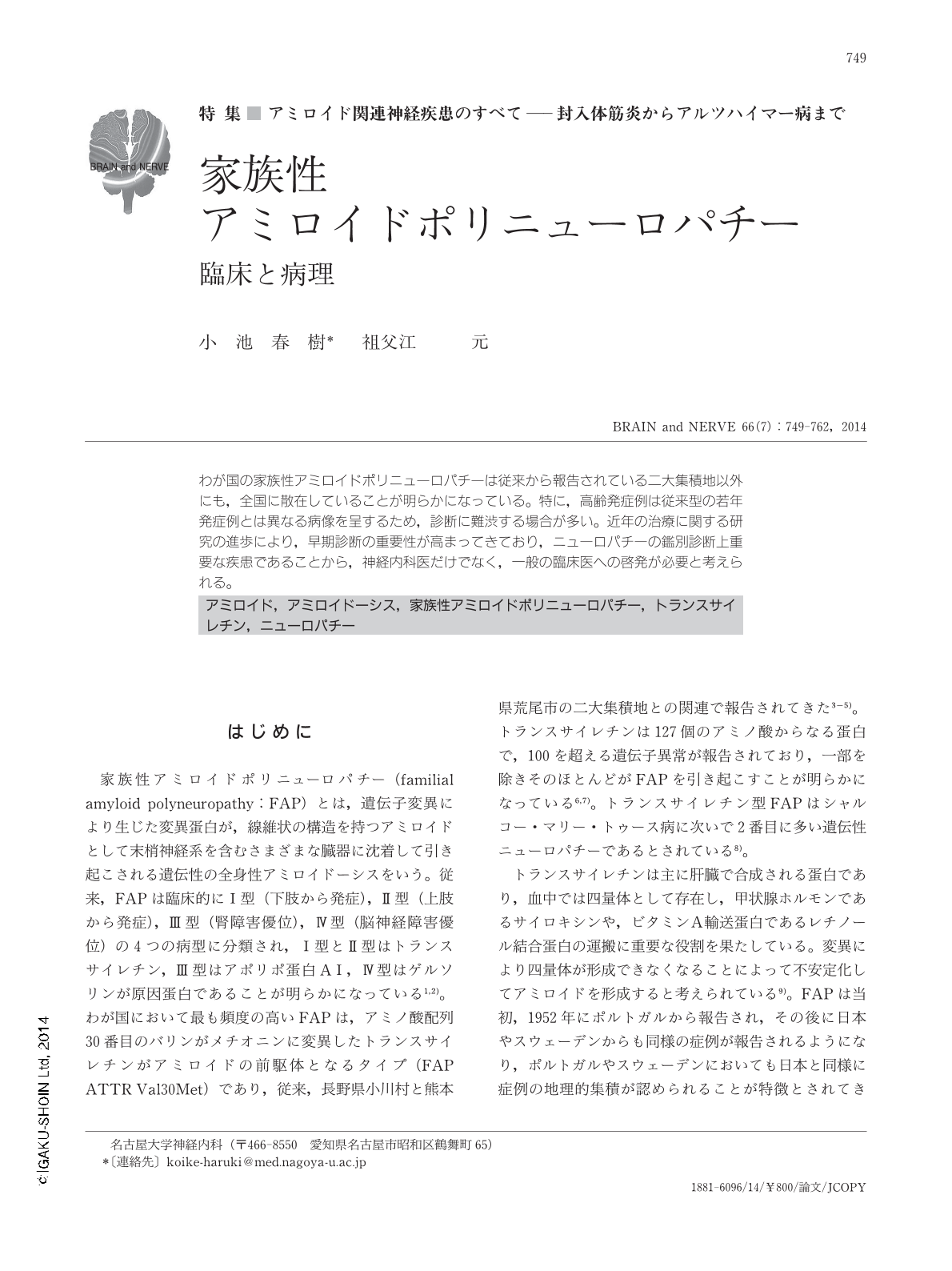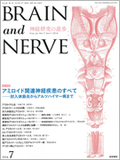Japanese
English
- 有料閲覧
- Abstract 文献概要
- 1ページ目 Look Inside
- 参考文献 Reference
わが国の家族性アミロイドポリニューロパチーは従来から報告されている二大集積地以外にも,全国に散在していることが明らかになっている。特に,高齢発症例は従来型の若年発症例とは異なる病像を呈するため,診断に難渋する場合が多い。近年の治療に関する研究の進歩により,早期診断の重要性が高まってきており,ニューロパチーの鑑別診断上重要な疾患であることから,神経内科医だけでなく,一般の臨床医への啓発が必要と考えられる。
Abstract
Due to the recent developments in biochemical and molecular analyses, the diagnosis of familial amyloid polyneuropathy (FAP) is greatly improved, and its prevalence is not considered as rare as was previously thought. The development of antiamyloid medications, such as tafamidis and diflunisal, has increased the value of early diagnosis of FAP. Transthyretin (TTR) Val30Met-associated FAP (FAP ATTR Val30Met) is the most common form of FAP. The characteristics of patients with early-onset FAP ATTR Val30Met from endemic foci in Japan include the presence of sensory dissociation and marked autonomic dysfunction associated with a predominant loss of small-diameter myelinated and unmyelinated nerve fibers. These characteristics are not common in late-onset patients from non-endemic areas. The distribution and characteristics of amyloid deposits in late-onset cases were similar to those of senile systemic amyloidosis with wild-type TTR deposition. Because patients with late-onset FAP ATTR Val30Met from non-endemic areas manifest nonspecific clinicopathological features, physicians may not consider FAP as possibility in the early phase of the disease; hence, some of the patients may be misdiagnosed as having chronic inflammatory demyelinating polyneuropathy (CIDP). Therefore, close attention should be paid to the possibility of a FAP diagnosis at the time of initial evaluation of any neuropathy of undetermined etiology to avoid misdiagnosis.

Copyright © 2014, Igaku-Shoin Ltd. All rights reserved.


